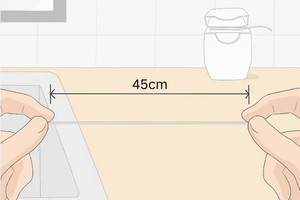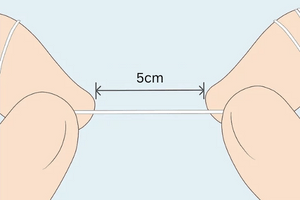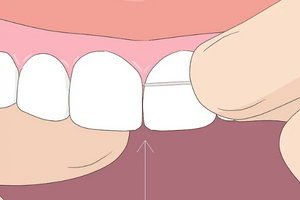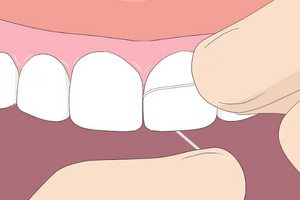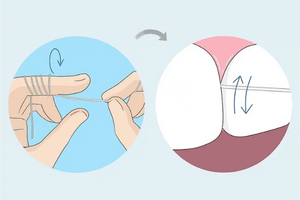How do you start your day?
Perhaps a quick run followed by a cold shower? Hitting snooze three times before getting out of bed? Trying to convince your 5 year old to put on their coat and shoes?
Everyone’s morning routine is different. But there’s one thing we should all be doing in exactly the same way, at exactly the same time. That is, brushing our teeth before we eat breakfast – not after.
Surprised? Most people assume that cleaning your pearly whites after breakfast is better. After all, surely it helps to remove any leftover food debris and start the day with fresh breath?
Whilst those things are true, it’s actually much more beneficial to brush before your bowl of porridge. As soon as the alarm clock goes off, we should all (ideally) be jumping out of bed and reaching straight for the toothbrush. Here’s why.
4 reasons to brush before your bran flakes
1. Clear overnight bacteria
Breakfast foods are notorious for containing sugary carbohydrates. Cereals, breads, waffles, pancakes – they all contain the stuff that plaque-causing bacteria love to feed on. And when you wake up in the morning, the level of bacteria inside your mouth is at its highest.
This creates the perfect conditions to wreak havoc on your teeth.
As you tuck into your bagel, the bacteria begin to flourish – feeding on the sugary carbs, multiplying even further and releasing acids that can damage the enamel.
Brushing your teeth before breakfast helps to clear away the bacteria that has accumulated inside your mouth overnight. If it’s not there, it can’t do any harm. Plus, the fluoride in the toothpaste will create a protective barrier and defend your enamel against acids in breakfast foods.
2. Avoid tooth erosion
Brushing too soon after eating a meal can also damage the enamel layer of the tooth.
This is particularly true after eating acidic food and drinks, such as those typically consumed at breakfast (e.g. fruits, orange juice, coffee). The bristles of the toothbrush can actually brush the leftover acid into the tooth, gradually wearing away the enamel to reveal the dentin beneath.
This is known as ‘tooth erosion’ and can lead to a range of symptoms, including discolouration.

3. Kick-start saliva production
Saliva is a fantastic protective force.
Not only does it deposit minerals that help to strengthen your teeth, it helps to break down food, neutralises acidity and naturally kills any harmful bacteria that may be lurking in your mouth.
Unfortunately, though, saliva production diminishes dramatically during sleep. This is part of the reason why bacteria can multiply through the night, and we often wake up with a dry mouth.
Brushing your teeth as soon as you get up is an easy way to kick-start normal ‘daytime’ production, therefore creating another line of defence against the acid in breakfast foods.
4. Make sure you remember
How many times have you scarfed down your beans on toast in the morning, and rushed out the door without a second thought for your oral hygiene? Whether you start work super early or need to get the kids ready for school, cleaning your teeth can often be the last thing on your mind.
Which is why it’s a good idea to get it done and dusted early doors.
Brushing prior to breakfast reduces the chances you’ll run out of time or forget to do it later. Then, all you need to do afterwards is give your mouth a quick rinse to clear away any food.
Prefer to stick to your usual routine?
If you’re set in your ways and would prefer to continue brushing your teeth after breakfast, this can be ok – providing you take a few precautions to lessen some of the effects outlined above.
For example, to avoid enamel erosion, try to wait at least 30-60 minutes after eating before you brush – and in the meantime, either rinse with or have a drink of water. This will remove any lingering food and allows enough time for your saliva to neutralise the pH balance of your mouth.
When you do get around to brushing your teeth, it also helps to use a soft-bristled brush.

Worried the damage may already be done?
Even if you’re in the habit of brushing your teeth after breakfast, enamel erosion takes a very long time. But some of the earliest signs include:
- discolouration of the teeth
- increased sensitivity to taste, texture and temperature
- cracks and chips
- indentations (known as cups) on the surface of your teeth
- pain
If you do notice any of these symptoms, it may be worth booking a routine check-up.
Unfortunately, erosion isn’t reversible. But having assessed your overall oral health, we can identify the issue and provide tailored advice on how it could potentially be treated (e.g. composite bonding, veneers etc.) and how to prevent the damage from becoming any worse.
Alternatively, for further tips on effective brushing habits, why not make an appointment with one of our dental hygienists? These are available to absolutely everyone – including members and non-members – and are a fantastic opportunity to learn more about the best oral hygiene practices.
Simply use our online booking system to choose a time and date that works for you.
Or if you prefer, you can either give us a call on 01744 25775 or send an email to info@kilnlanedental.co.uk and we’ll respond to your enquiry as soon as possible.

